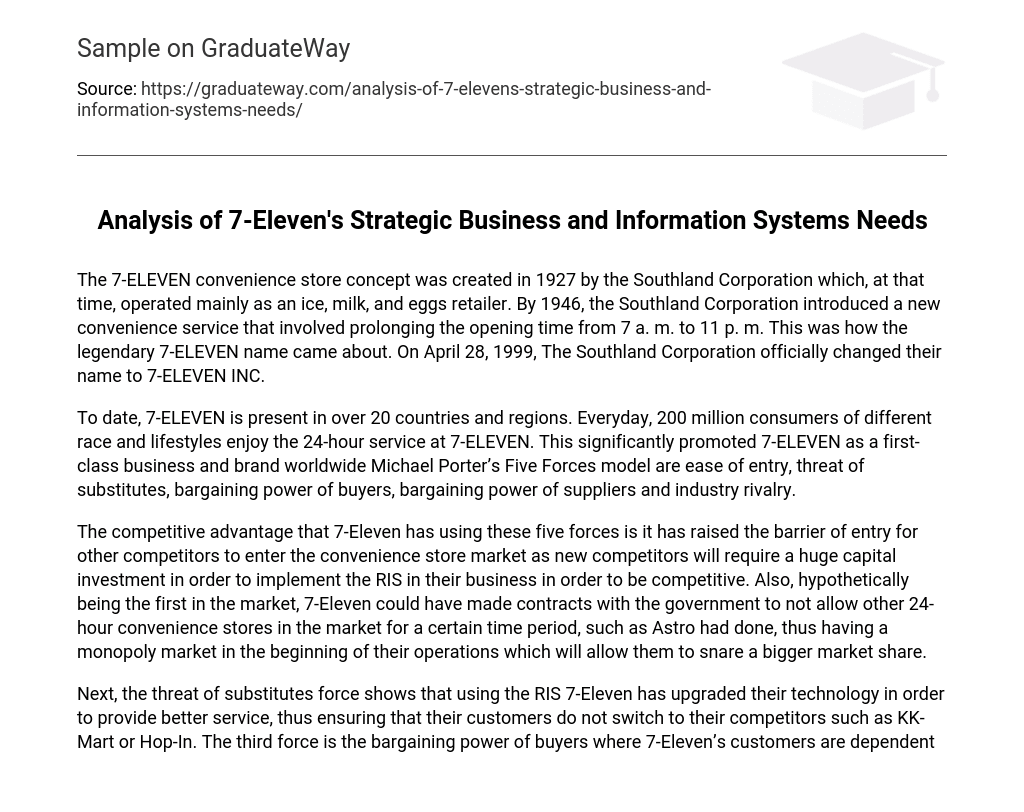The 7-ELEVEN convenience store was founded in 1927 by the Southland Corporation. Originally, it focused on selling ice, milk, and eggs. In a groundbreaking move in 1946, the Southland Corporation extended their operating hours from 7 a.m. to 11 p.m., which led to the iconic name of 7-ELEVEN. Finally, on April 28, 1999, the Southland Corporation officially changed its name to 7-ELEVEN INC.
7-ELEVEN is currently operating in more than 20 countries and regions, serving a diverse group of 200 million customers with around-the-clock service. This global presence has greatly enhanced the reputation and success of 7-ELEVEN as both a top-notch business and brand. Furthermore, Michael Porter’s Five Forces model examines factors such as the ease of entering the market, the threat of alternative products, the bargaining power of buyers and suppliers, and the level of competition within the industry.
7-Eleven possesses a competitive advantage by leveraging these five forces. It effectively heightens the barrier of entry for potential rivals aiming to tap into the convenience store industry, as they would need a substantial capital investment to incorporate the RIS and remain competitive. Additionally, if we consider the hypothetical scenario where 7-Eleven was the inaugural player in the market, it could have potentially forged agreements with the government to prevent other 24-hour convenience stores from entering the market during a specified timeframe, much like Astro did. This would create a monopoly-like market environment for 7-Eleven in the initial stages, enabling it to secure a larger market share.
The RIS 7-Eleven has improved its technology to enhance service quality, preventing customers from switching to competitors like KK-Mart or Hop-In. Additionally, 7-Eleven’s customers’ dependency contributes to the bargaining power of buyers.





